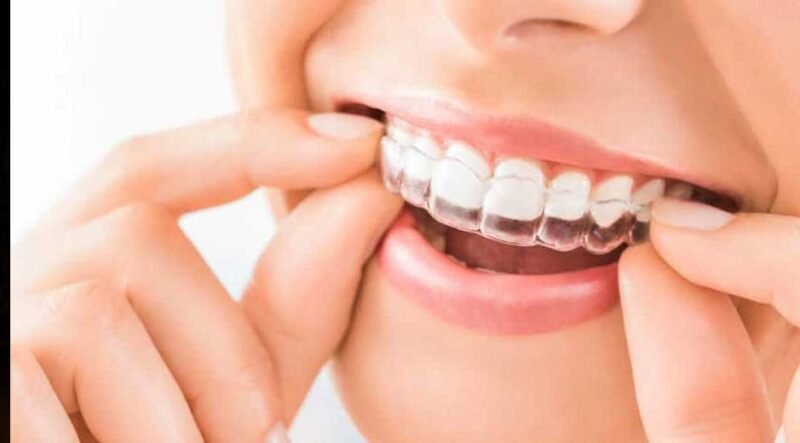Maintaining the results achieved through Invisalign treatment requires ongoing care, and retainers play a crucial role in this process. While Invisalign aligners gradually shift teeth into their desired positions, the teeth naturally have a tendency to move back over time. Retainers serve as a safeguard, ensuring that the time, effort, and investment put into the treatment yield lasting results. We will explore the importance of retainers, how they function, and the practical ways patients can integrate them into their oral care routine. Understanding their role can help patients preserve a confident smile and maintain proper dental alignment long after the active phase of Invisalign treatment is complete.
Understanding the Function and Importance of Retainers
- Stabilizing Tooth Position
After Invisalign aligners have guided teeth into their correct positions, the surrounding bone and soft tissue need time to adjust. Teeth are not permanently fixed immediately; they require a period of stabilization. Retainers hold the teeth in place, allowing the bone to remodel around the new alignment. At our company, we emphasize the importance of this phase to ensure lasting results. Without retainers, even small shifts can occur, which may lead to misalignment and a reversal of the progress achieved through treatment. This stabilization phase is essential for maintaining a smooth, even smile and for protecting the investment in orthodontic care. Retainers act as a bridge between the end of active treatment and long-term oral stability, ensuring that the teeth remain in their intended positions.
- Preventing Relapse
Relapse is a common occurrence when teeth slowly drift back toward their original position after orthodontic treatment. The risk of relapse is higher in patients who do not adhere to retainer guidelines. Retainers are designed to prevent this backward movement by applying gentle pressure to maintain alignment. Both removable and fixed retainers have unique benefits: removable retainers offer flexibility and ease of cleaning, while fixed retainers provide constant support without patient intervention. Consistent use of retainers is key to avoiding the frustration of teeth shifting after the effort spent with Invisalign. Patients who neglect to use their retainers may find themselves requiring corrective treatment again, underscoring the critical importance of these devices.
- Supporting Long-Term Oral Health
Beyond preserving the aesthetic alignment of teeth, retainers contribute to overall oral health. Misaligned teeth can create spaces that trap food and bacteria, increasing the risk of cavities, gum disease, and enamel wear. Retainers help maintain a proper bite, which supports effective chewing and reduces unnecessary pressure on certain teeth. By keeping teeth in their proper positions, retainers also aid in maintaining clear oral hygiene practices, making it easier to brush and floss effectively. In this way, retainers play a dual role: they not only secure the results of Invisalign treatment but also encourage long-term dental wellness.
- Adjusting to Lifestyle Changes
Patients may experience changes in their oral structure due to aging, jaw growth, or habits such as teeth grinding. Retainers offer a flexible solution, providing ongoing support even as these natural changes occur. Regular follow-ups with a dentist or orthodontist can help ensure that the retainer continues to fit properly and provides the necessary stabilization. Removable retainers can be adjusted or replaced if slight shifts occur, while fixed retainers can be monitored for wear or loosening. This adaptability ensures that patients can continue to enjoy the benefits of their Invisalign treatment over the years, without worrying about gradual changes compromising their smile.
- Enhancing Patient Confidence
The visible results of Invisalign treatment can have a significant impact on a person’s self-confidence. Retainers help maintain that positive transformation by keeping teeth aligned and aesthetically pleasing. Knowing that their teeth are supported by a retainer can reassure patients that their investment in treatment will have lasting effects. Confidence in dental appearance also encourages better oral care habits and reinforces the importance of regular dental visits. The psychological benefits of maintaining a straight, healthy smile are often as valuable as the physical advantages, making the role of retainers integral to both oral health and personal confidence.
- Facilitating Smooth Transition from Aligners
Transitioning from active Invisalign aligners to long-term maintenance can feel sudden for some patients. Retainers provide a gentle bridge between these phases, gradually adjusting the patient to a maintenance routine. By wearing a retainer as instructed, patients can transition smoothly from daily aligner use to a more relaxed maintenance schedule without risking misalignment. Dentists may recommend wearing the retainer full-time initially and then gradually reducing usage to nighttime wear only. This structured approach ensures that the alignment remains consistent while allowing patients to comfortably adapt to a retainer-focused routine.
- Encouraging Compliance Through Education
Patient education is crucial for ensuring the effective use of retainers. Dentists provide guidance on how long retainers should be worn, cleaning practices, and signs of wear or damage. Understanding the consequences of non-compliance motivates patients to adhere to retainer use. Many patients may underestimate the importance of retainers after completing Invisalign treatment, but education emphasizes that consistent care is necessary to protect the outcome. Properly instructed patients are more likely to achieve lasting results, as they understand the role retainers play in maintaining the alignment achieved during treatment.
Retainers are a crucial component of the Invisalign journey, ensuring that the progress achieved during active treatment is maintained over time. They stabilize tooth positions, prevent relapse, support oral health, and adapt to lifestyle changes, all while reinforcing patient confidence and facilitating a smooth transition from aligners. Proper education and adherence to retainer guidelines are critical for achieving lasting results. By committing to retainer use, patients protect the investment in their smile and maintain the benefits of a properly aligned bite. Incorporating retainers into a consistent oral care routine ensures that the positive outcomes of Invisalign treatment endure for years to come, offering both aesthetic and functional advantages that extend far beyond the completion of active treatment.









